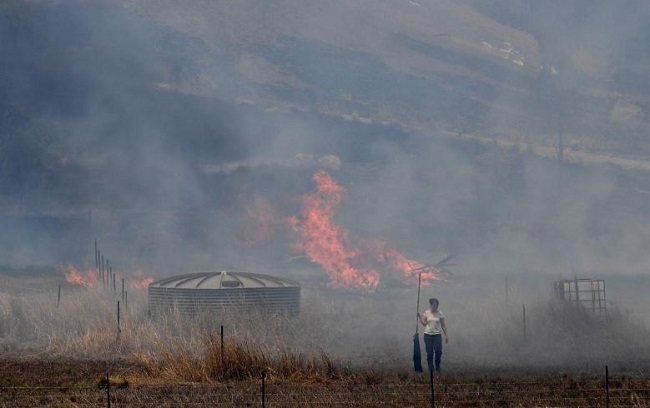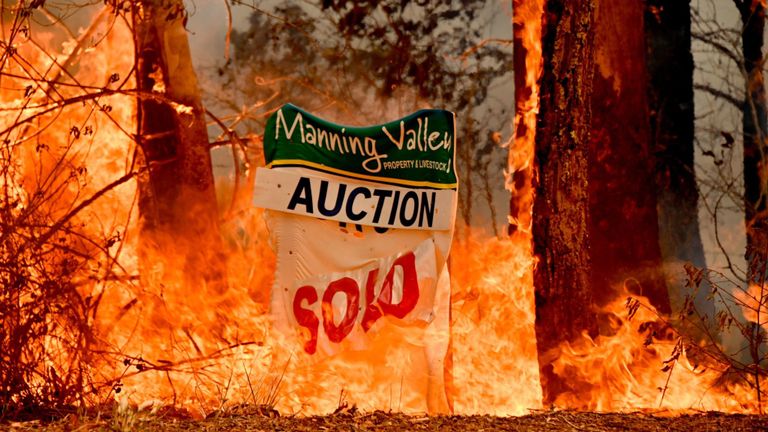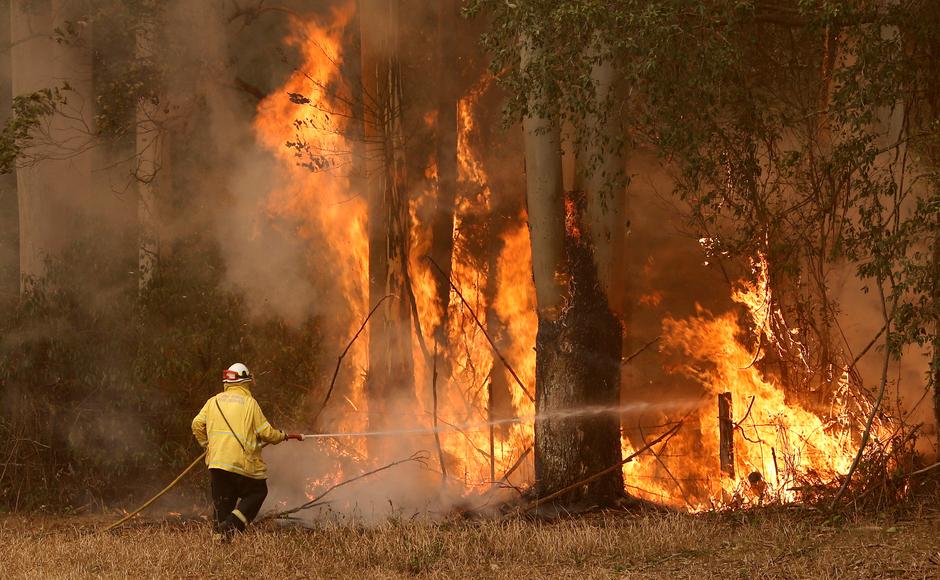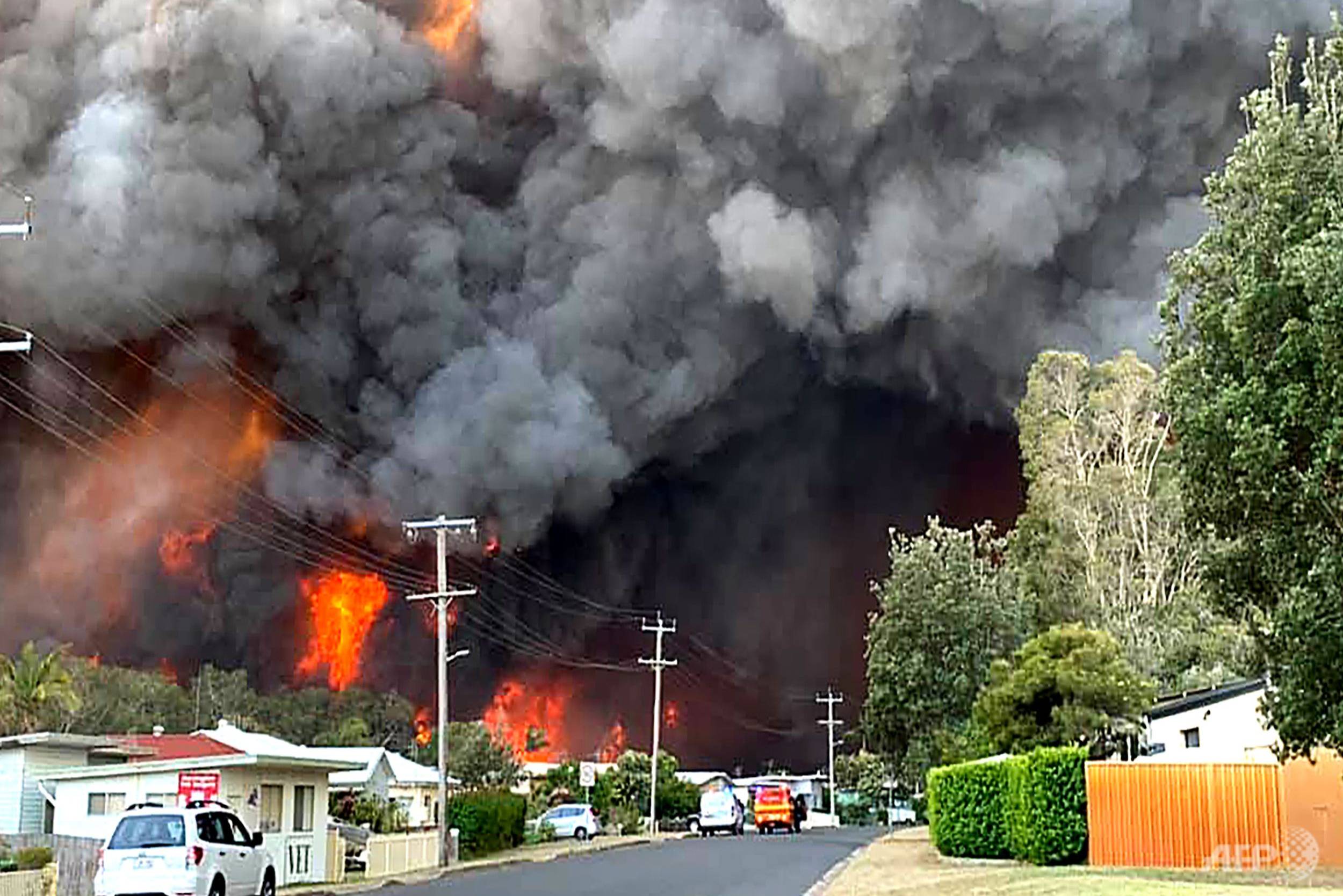Australia orders evacuations as firefighters struggle to contain bushfires
Australian officials ordered people in several communities, including a major tourist destination, to evacuate immediately on Wednesday as firefighters struggled to contain more than 150 bushfires raging across the country’s east coast.

Sydney: Australian officials ordered people in several communities, including a major tourist destination, to evacuate immediately on Wednesday as firefighters struggled to contain more than 150 bushfires raging across the country’s east coast.
While a cool change overnight brought some relief for firefighters in New South Wales (NSW) state, attention shifted to its northern neighbour Queensland, where hot, dry and windy conditions had created a severe fire danger.
Also Read: 'Too late to leave': Australians take shelter from intense bushfires
Authorities issued a “leave immediately” warning, the highest level, for several areas including Noosa, a popular beachside holiday destination 150 km (93.2 miles) north of Brisbane, the state capital of Queensland.

“Conditions are now very dangerous and firefighters may soon be unable to prevent the fire advancing,” Queensland Fire and Emergency Services (QFES) said in the emergency warning. “The fire may pose a threat to all lives directly in its path.”
Noosa Mayor Tony Wellington told Reuters many of the residents in the affected north, accessible only by ferry or via the beach, had already evacuated earlier this week.
Also Read: Australian authorities urge evacuations ahead of 'catastrophic' fire threat
But he added that winds were picking up, “making things particularly tricky. There are plenty of crews battling the fire, including two helicopters.”
Also Read |
'Get out': Australians flee again as heat and wind fan huge bushfires
Bushfires are a common and deadly threat in Australia’s hot, dry summers, but the ferocity and early arrival of this year’s outbreak in the southern hemisphere spring has caught many by surprise. They have so far claimed three lives and destroyed around 2.5 million acres of farmland and bush.
Blazes have been spurred by extremely dry conditions after three years of drought in parts of NSW and Queensland, which experts say has been exacerbated by climate change.
More than 1.1 million hectares (2.7 million acres) of land have been either burnt or burning, and the hot and windy conditions are set to spike again next week.

“We will not have all these fires contained before then,” NSW Rural Fire Service Commissioner Shane Fitzsimmons told reporters in Sydney on Wednesday morning. “We will not have all these fires contained and locked up for many, many weeks.”
“Unfortunately, what we need is rain ... And there is certainly nothing in the forecast for the foreseeable future that’s going to make any discernible difference to the conditions that we are experiencing.”
Also Read: Two people found dead and 100 homes destroyed in Australian bushfires
Some 50 homes were destroyed in NSW on Tuesday, when flames came within metres of homes in Greater Sydney amid potentially “catastrophic” high winds and searing heat. But no deaths were reported as warning systems and evacuation plans ahead of what officials said was the greatest threat in at least a decade appeared to save lives.
“It was just chewing up everything,” Karen Weston told Australian Broadcasting Corp from an evacuation centre of a fire near Taree on the mid-north coast. “I’ve survived two other bushfires before this but never anything like this.”
Also Read |
Australian firefighters try to control bushfires ahead of hot days
Academy award winning actor Russell Crowe tweeted photos and video footage on Wednesday of firefighters using helicopters to waterbomb his property near Nana Glen, an inland rural community some 580 km north of Sydney in NSW. Crowe said the property had “lost a couple of buildings”, some fires were still burning and “we are out of water.”

CLIMATE POLITICS
The fires have sparked increasingly acrimonious debate over Australia’s climate change policies, with the ruling conservative Liberal Party and the minor opposition Australian Greens exchanging barbs.
Former deputy prime minister and current lawmaker Barnaby Joyce was among those who have suggested that climate activists were at least partly responsible for the fires by lobbying to reduce so-called “back burns”, fires deliberately lit to clear out dry undergrowth.
Also Read: Australia to press Facebook for details on Libra cryptocurrency
Deputy Prime Minister Michael McCormack, meanwhile, said link between the fires and the government’s support of the coal industry were “the ravings of some pure, enlightened and woke capital city greenies.”
Prime Minister Scott Morrison, who has repeatedly declined to comment on climate change during the current crisis, called for moderation in the debate on Tuesday evening. (Reuters)
 Dynamite News
Dynamite News 